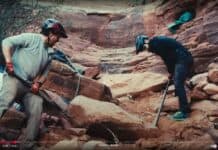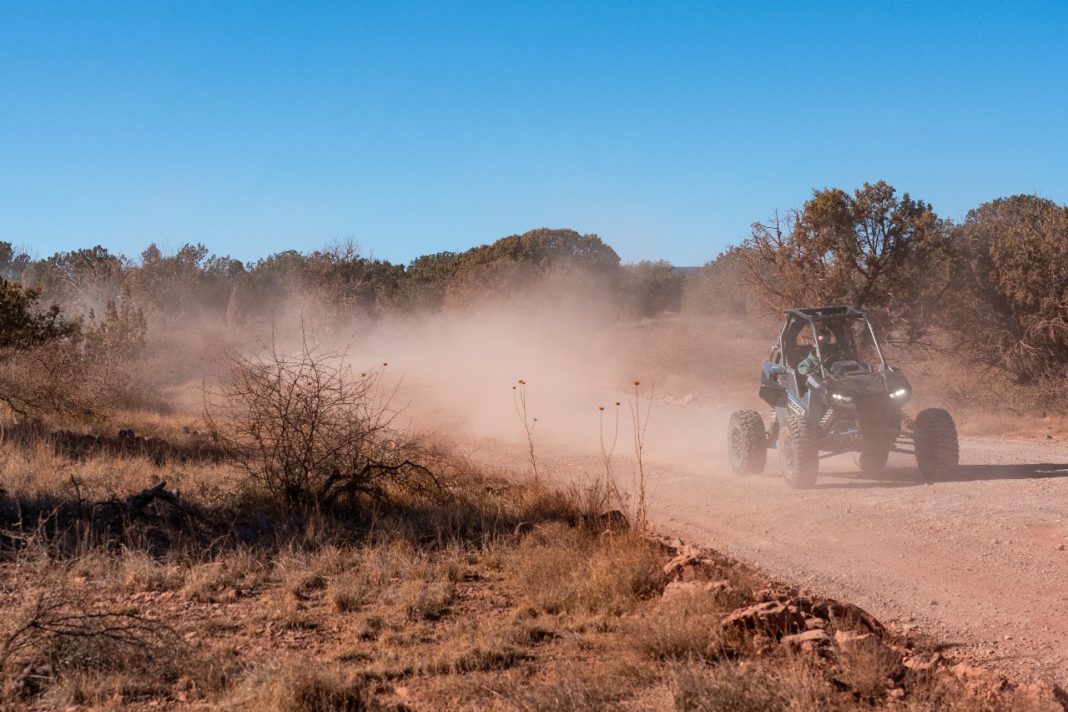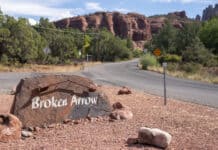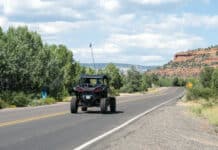With Northern Arizona’s wildfire season finally at a close, the Coconino National Forest is focusing again on off-highway vehicle management, and the agency is balancing two competing philosophies to protecting forest resources: Hard closures vs. softer touch measures like education and signage.
The issue is a powder keg because there are vocal and powerful interests on both sides.
Currently, the agency is performing something of a “stern parent/nice parent” routine with local off-highway vehicle companies in order to enlist their help, floating the possibility of road closures or a permit system for OHV routes if progress isn’t made.
At the same time, USFS has expressed a preference for keeping power sports opportunities open west of Sedona.
Coconino National Forest Supervisor Laura Jo West has been playing the stern parent in this process, writing in a July 21 letter to all the Jeep and ATV companies in the Verde Valley, that “if we are unable to … demonstrate that OHV recreation can continue without unnecessary resource damage, I will take action to close access to these opportunities.”
West then urged the companies to work with the Sedona Chamber of Commerce on developing a motorized recreation plan that would mitigate resource damage, stating that “a meaningful, long-term commitment from local OHV businesses is necessary to protect access to the OHV routes that your customers demand.”
The Sedona Chamber of Commerce’s 2022 budget allocates $25,000 to developing a “master plan” for OHV recreation.
In a follow up email to the rental companies sent after West’s letter, Chamber President Candace Carr Strauss is the nice parent, mentioning to the companies a planned “Top 10 Myth-BUSTERS Related to Motorized Recreation” list for VisitSedona.com before advising them to stay tuned for the next meeting.
District Ranger Amy Tinderholt said the OHV plan that would emerge from the collaboration would not be a change to Coconino National Forest’s formal Forest Plan.
Instead, it might look more like the Fly Friendly Agreement signed by Sedona’s two helicopter tour companies in the spring of 2020. The agreement between the Sedona Chamber of Commerce and the helicopter companies, with help from Keep Sedona Beautiful, gave incentives to the companies for voluntarily maintaining certain flight patterns and hours, and installing GPS on aircraft so flights could be monitored.
The effectiveness of the Fly Friendly Agreement has been difficult to assess because helicopter tours were disrupted by the pandemic and are reportedly not yet back to their pre-pandemic levels.
Strauss said that so far discussions with industry partners are going well, and she’s optimistic that “innovative solutions” will come out of the meetings.
Existing Cooperation
Brian Carstens, the manager of Sedona ATV, the largest rental company in Sedona, said that as demand for OHV recreation swelled, he has added measures to increase driver accountability and prevent damage.
To help with enforcement, Sedona ATV has added conspicuous numbered signs to the front of vehicles, which also have GPS tracking installed. Carstens said the GPS is useful for going to assist customers if they have a mechanical problem, but it is also shared with law enforcement when they are investigating reports of illegal driving. This information has led to citations.
He also pointed out that Sedona ATV doesn’t rent machines overnight, which reduces noise from rental vehicles after hours. ATV noise in the early morning and night has been a major issue for some OHV destinations, like Moab, Utah, but it is not one of the bigger issues in Sedona.
Other local ATV companies are also not renting overnight.
Measures like these could become part of a chamber-brokered agreement with local companies backed by incentives.
Sedona Red Rock News reached out to Polaris Adventures to understand what side-by-side manufacturers are doing to mitigate impacts to the environment. Senior Director Gray Rentz responded with the following statement: “At Polaris Adventures, we are committed to preserving the outdoor areas we love and enjoy. With an increase in outdoor recreation recently, we believe all riders must be educated on best practices and proper trail etiquette. To help with that effort, we work with our Outfitters and other partners to teach responsible riding techniques and outfit vehicles with the latest mapping technology to encourage proper navigation. We are also a member of Tread Lightly! and follow their principles to minimize our environmental impact in the communities we operate.”
Carstens said he is motived to implement mitigation by the desire to be a good neighbor and protect the trails. He and others in the OHV community currently aren’t too worried about losing access west of Sedona, and they may be justified in that feeling.
Because Arizona is one of the states where utility-terrain vehicles — the “side-by-side” version of ATVs — can be registered as street legal, USFS would have to close or put in a permit system for all vehicles on a given road to keep UTVs out. The USFS can’t legally discriminate between street legal UTVs and home delivery trucks.
There are only a handful of roads that aren’t necessary for accessing private property and important forest sites west of Sedona, and to close or permit those few, USFS would have to go through a long administrative process involving an environmental study and public input.
Yavapai County is proposing a change in state law at the upcoming meeting of the County Supervisors Association that would give counties additional tools to regulate OHVs on rural roads. It’s not clear yet whether other counties would support a change.
Clock is Ticking
Interest in OHV recreation has been building for years and accelerated during the pandemic, when COVID-19 restrictions and West Coast wildfires drove people to the area in record numbers. The surge in use has left scars in the form of new tracks and ever-widening clearings.
Asked why the soil is so sensitive west of Sedona, local geologist Wayne Ranney said it is “nothing but windblown sand that is only marginally stabilized by the grass that is grown on it.”
There are also fragile cultural resources in the area. Rock art pecked, daubed and scratched into the cliffs spans from the historic period to the archaic, and there is an active research project underway to explore whether some of the markings date back to the Paleolithic period, more than 10,000 years ago.
Though fragile, the grasslands west of Sedona are a magnet for power sports because OHV opportunities in red rock country are a limited resource, and the area boasts a relatively abundance of OHV trails.
Resident complaints and pressure from Coconino National Forest to address OHV impacts are not the only forces adding urgency to the issue — the rapid growth of the OHV industry is also putting a timer on figuring out a plan.
There are currently 452,966 OHVs registered in Arizona, 115,239 of which are street legal, according to ADOT spokesman Doug Pacey.
“Interest [in ATV rental] is building and building and building,” Carstens said.
Editor’s Note: The online version of this story includes a statement from Polaris Adventures not included with the print version of the story.





















